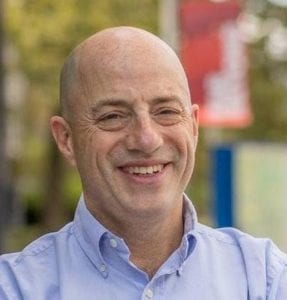By Kyle Barr and Monica Gleberman
Dr. Joe Rella, the beloved former Comsewogue superintendent who spent just over 25 years in the district, passed away Feb. 21, with Moloney Funeral Homes and the district confirming his death late Friday night. He was 69.
Community members flocked to social media to share their thoughts and memories about their superintendent affectionately known around the district as just “Rella.”

“So much of what I learned about community was through his unceasing example of what it meant to serve the place you call home,” said Kevin LaCherra, who graduated in 2009. “To bring people in, to find out what they need, to fight like hell to get it and then to pass the torch.”
Rella entered the district as a part-time music teacher, making only $28,000 in salary. He would move on to become a full-time music teacher, then the high school principal and finally, superintendent of schools, which was his final position, held for nine years.
In an interview with TBR News Media before his retirement and final graduation ceremony in 2019, Rella had likened the act of running a school district to music, all based in a learning process for both the students and for him.
“Because one thing you learn, there is no such thing as a mistake, it’s a springboard to your next part of the piece,” he said.
The district planned to decorate school buildings with blue-and-gold ribbons come Monday and make counselors available for students who may need it, current Superintendent Jennifer Quinn said Saturday. The district was closed Wednesday, Feb. 26 to allow teachers and students to attend his funeral.
Quinn had worked with Rella for 13 years. In a phone interview Saturday, the current superintendent had nothing but great things to say about her predecessor and mentor. If anything, she said Rella “did not want people to remember him sadly. He wanted them to smile and laugh. He just loved everybody.”
Rella’s wife, Jackie, passed in 2016 following a struggle with breast cancer. The superintendent himself had been diagnosed with stage 4 bile duct cancer in 2017. Despite his sickness, he would stay on in the top position for another two years.
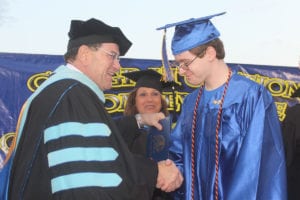
It was that dedication, even in the face of sickness and loss, that built up so much trust between him and the community over the years. Quinn said he was humble, always the one to take the blame if plans didn’t work out, but he was always ready to heap praise on others.
“He made everyone important,” she said. “He never shied away from a tough problem and tried to make everything better — he always did.”
Others in the district said Rella’s example pushed them to do more and to do better. Andrew Harris, a special education teacher in the high school, created Joe’s Day of Service in 2018. Named after the then-superintendent, the program asked students to do volunteer work around the school and the greater community. Students have traveled all the way to the Calverton Cemetery in both 2018 and 2019 to clean graves and plant flags.
Harris said there are hundreds of examples of Rella’s kindness, such as driving over an hour to take care of a teacher’s mother who was suffering from cancer.
“In many ways, just like they call the middle of our country the ‘flyover states,’ Port Jefferson Station used to be like a ‘drive-through town’ — people were on their way to another town as the destination,” Harris said. “That all changed with Dr. Rella’s leadership. No matter where you went, and especially as a teacher, when you say you are from Comsewogue and Port Jefferson Station, people know where you came from and the legacy. It makes us all proud to say it.”
The school board accepted Rella retirement in November 2018. He had said in previous interviews his diagnosis did not factor into his decision to retire, and it had been his and his wife’s intent to make that year his last.
“Joe and Jackie were the face of Comsewogue for many years,” said John Swenning, school board president. “Their dedication and support to our administrators, teacher, staff, parents and most importantly our students is nothing short of legendary. Dr. Rella is the Italian grandfather that every kid deserves to have. He will be missed dearly.”
School board trustee Rob DeStefano had known Rella since his sophomore year in Comsewogue high, when the to-be super had joined the district as the new music teacher. DeStefano would be elected to the board coinciding with Rella’s appointment as head of schools. One memory that cemented the famed superintendent in his mind, according to a previous column he wrote for TBR after Rella’s announced retirement, was during a jazz band concert he and his wife got up on stage and started to dance the Charleston.
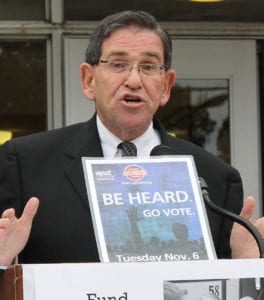
Despite the loss, the Rella name lives on in the district, particularly in the high school courtyard, full of sunflowers, named Jackie’s Garden after his late wife. As the superintendent participated in his final high school graduation ceremony last year on June 26, students rolled out a new plaque, naming the high school auditorium the Dr. Joseph V. Rella Performing Arts Center.
His funeral, held Wednesday, Feb. 26, at St. Gerard Majella R.C. Church in Port Jefferson Station, drew huge crowds of family as well as school officials and community members.
Those same Community members and school officials gathered outside the high school Wednesday morning before the funeral. At just after 10 a.m., a hearse bearing Rella and a procession drove around the circle outside the high school, his final visit to the institution residents say he cared so deeply about. Members of both the Port Jefferson and Terryville fire departments hung a giant flag above the ground for the hearse to drive under. Residents and students held blue and yellow signs, all thanking the superintendent for his life of work and service.
Quinn said they will be working out the details for a larger memorial sometime in the near future.
“He embodied the Comsewogue culture — pushed it and all of us forward,” said 2019 graduate Josh Fiorentino. “To say I know how he wanted to be remembered would be a lie. However, I and many others will remember him as a Warrior. The truest of them all.”

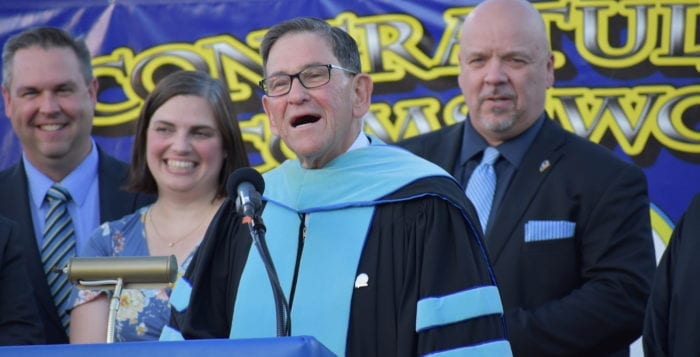

















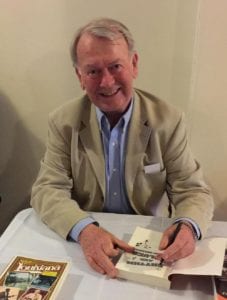



 Linda Gould Dwyer
Linda Gould Dwyer James Autino
James Autino Lenore Prizzi
Lenore Prizzi
















